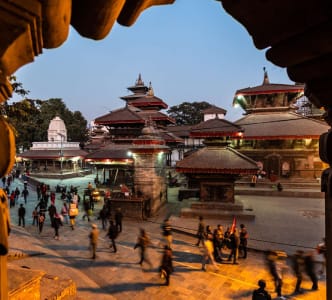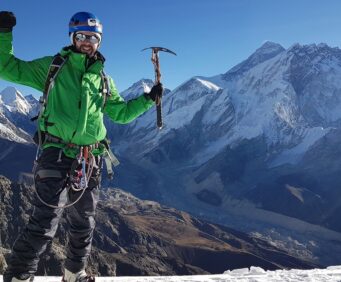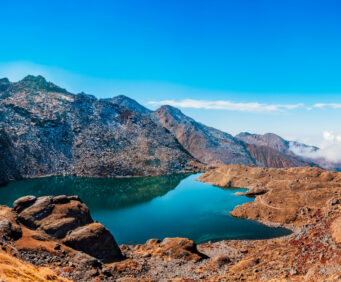
Lobuche East Peak Climb Difficulty: Your Guide to This Himalayan Challenge
16th November, 2025 - Posted By: Himalayan AbodeThe Lobuche East Peak climb difficulty is a subject of deep interest for mountaineers aiming to summit one of Nepal’s most iconic trekking peaks in the Everest region. At an impressive elevation of 6,119 meters (20,075 feet), Lobuche East Peak offers mountaineers a thrilling mixture of technical climbing, high altitude endurance, and breathtaking views of the world’s highest peaks.
This guide delves into the climb difficulty, technical requirements, acclimatization, risks, preparation tips, and detailed route descriptions. Whether you are an experienced climber or new to high-altitude expeditions, understanding the challenges of the Lobuche East Peak climb is crucial for a safe and successful ascent.
Lobuche East Peak: Overview and Location
Lobuche East is part of the formidable mountain mass of Lobuche in the Khumbu region near Everest Base Camp. While considered a trekking peak by the Nepal Mountaineering Association (NMA), it is a challenging climb demanding technical skills and high fitness due to steep ice and rock sections.
The mountain sits close to the bustling trekking hubs of Lobuche village and Everest Base Camp, making it accessible but requiring preparation for difficult terrain.
Understanding Lobuche East Peak Climb Difficulty
The Lobuche East Peak climb difficulty is rated as moderate to difficult for technically equipped mountaineers. The climb involves glacier travel, steep snow slopes reaching 45-60 degrees, mixed rock and ice climbing, and navigation on exposed ridges.
Several factors contribute to the challenge, including:
- Elevation: At over 6,000 meters, altitude sickness is a serious risk. Good acclimatization is mandatory.
- Technical Sections: Ropes, crampons, and ice axes are essential for safely traversing ice walls and steep rock faces.
- Weather: The Khumbu region’s cold, windy, and unpredictable weather increases exposure risk.
- Physical Demand: Prolonged climbing and heavy gear make stamina and strength critical.
Technical Skills Required for Lobuche East Peak Climbing
Unlike simple trekking peaks, Lobuche East demands familiarity and competency with technical mountaineering:
- Use of crampons and ice axe on steep icy slopes
- Rope techniques including belaying, rappelling, and fixed rope climbing
- Glacier navigation skills with crevasse rescue knowledge
- Ability to manage high-altitude climbing in varying snow and ice conditions
Many climbers undertake professional courses or practice on smaller peaks before attempting Lobuche East.
Acclimatization and Fitness
A successful ascent heavily depends on acclimatization and physical fitness. The climb typically starts from Everest Base Camp (5,364m) with staged camps higher up for acclimatization.
Trekkers must:
- Spend several days at progressively higher altitudes
- Hydrate well and eat energy-rich food
- Train for cardiovascular endurance, strength, and flexibility months in advance
- Pay attention to symptoms of acute mountain sickness (AMS)
Fitness training including hiking, running, cycling, and strength work prepares climbers for endurance and technical challenges.
Typical Lobuche East Peak Climb Itinerary
A typical expedition to Lobuche East spans about 18-21 days, combining trekking and climbing phases:
- Day 1-7: Trek from Kathmandu via Lukla to Everest Base Camp and Lobuche Village for acclimatization
- Day 8-10: Base camp preparation, gear checks, and rest
- Day 11-15: Climbing camps at various altitudes (Camp 1: ~5,800m; Camp 2: ~6,000m)
- Day 16: Summit attempt via steep ice slopes and ridge climbing
- Day 17-18: Descent and return trek to Lukla
- Day 19-21: Flight back to Kathmandu and rest
This itinerary includes critical acclimatization days and flexible weather windows.
Risks and Challenges in Lobuche East Climbing
While rewarding, climbers face risks including:
- Altitude sickness and hypoxia
- Sudden weather changes including storms and whiteouts
- Slips and falls on steep ice/snow sections
- Avalanches and rockfall on exposed ridges
- Exhaustion and dehydration
Proper preparation, guides, and experience reduce risk significantly.
Preparation Tips for a Successful Climb
- Secure experienced guides familiar with Lobuche East terrain
- Focus on building technical climbing skills before the expedition
- Train rigorously for stamina and strength
- Carry proper high-altitude climbing gear: boots, crampons, ice axe, harness, helmet
- Pack insulated clothing and PPE for extreme cold and wind
- Stay hydrated and nourish well during trek and climb
- Follow a strict acclimatization schedule with planned rest days
Essential Gear List
- Mountaineering boots compatible with crampons
- Climbing harness and helmet
- Crampons and ice axe for glacier and ice climbing
- Ropes, carabiners, and belay device
- Heavy insulated jacket and layers for high-altitude cold
- Headlamp, gloves, sunglasses with UV protection
- High SPF sunscreen and lip balm
- Personal first aid and altitude sickness medication
Best Time to Climb Lobuche East Peak
The ideal climbing seasons are:
- Spring (April to May): Stable weather, moderate temperatures, less snow.
- Autumn (September to November): Clear skies and calm weather after monsoon, excellent visibility.
Avoid climbing during winter or monsoon months due to hazardous weather and avalanche risk.
Unique Views from the Summit
From the summit of Lobuche East, climbers witness awe-inspiring views of giants like Mount Everest, Lhotse, Nuptse, Cho Oyu, and Makalu. These breathtaking panoramas reward every strenuous step taken on this challenging climb.
Conclusion: How Difficult is Lobuche East Peak Climb?
The Lobuche East Peak climb difficulty falls into the moderate to difficult category among Nepal’s trekking peaks. It requires technical mountaineering skills, excellent physical condition, and proper acclimatization.
With preparation, experienced guidance, and respect for mountain conditions, climbers can safely summit this spectacular peak and experience one of the most thrilling high-altitude climbs near Everest.
Recent Posts



